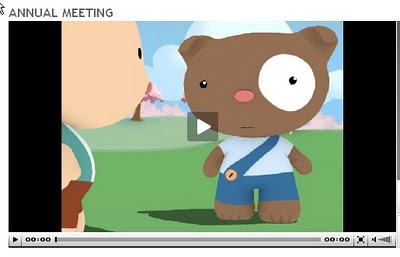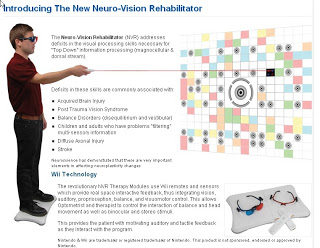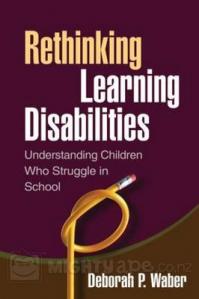 OPTOMETRISTS SHARE ATTITUDES AND PRACTICES IN FITTING CHILDREN IN CONTACT LENSES Study offers practitioners’ insights on appropriate age to introduce a child to soft contact lenses and factors that influence their decision to prescribe contacts for children
OPTOMETRISTS SHARE ATTITUDES AND PRACTICES IN FITTING CHILDREN IN CONTACT LENSES Study offers practitioners’ insights on appropriate age to introduce a child to soft contact lenses and factors that influence their decision to prescribe contacts for children ST. LOUIS (October 5, 2010) - More than half of optometrists feel it is appropriate to introduce a child to soft contact lenses between the ages of 10-12, with daily disposable contact lenses being the most frequently prescribed contacts for this age group, according to a new
American Optometric Association (AOA) study.
At ages 8-9 (51 percent) and 10-12 (71 percent), optometrists most often fit children in glasses as the primary method of vision correction and prescribe contact lenses as a secondary correction. However, data from the survey of 576 optometrists from across the country shows a gradual shift in optometrist’s approach to vision correction as children get older, with 21 percent noting that they are more likely to fit 10-12 year olds in contact lenses than they were a year ago. One-in-five (20 percent) respondents say they begin prescribing contact lenses as the principal form of vision correction for children ages 10-12; nearly half (49 percent) prescribe contact lenses first for 13-14 year olds, and two-thirds (66 percent) recommend contact lenses as the main form of vision correction for 15-17 year olds.
“Studies in children’s vision correction confirm that contacts provide collateral benefits to children beyond simply correcting their vision, including significantly improving how they feel about their physical appearance, acceptance among friends, and ability to play sports, so it’s no surprise that optometrists and parents are becoming even more comfortable with the decision to recommend contact lenses to children when vision correction is required,” says Christine W. Sindt, OD, FAAO, Associate Professor of Clinical Ophthalmology, Department of Ophthalmology and Vision Sciences, University of Iowa, and Chair of the Contact Lens and Cornea Section of AOA.
The Children & Contact Lenses study was conducted by the AOA Research and Information Center in conjunction with the Sports Vision Section and Contact Lens and Cornea Sections of AOA, with support from VISTAKON®, Division of Johnson & Johnson Vision Care, Inc. The study was designed to gauge current trends in prescribing contact lenses to children ages 8-17 and to understand factors that influence optometrists’ decisions to fit a child in contacts. On average, respondents indicated that children up to the age of 17 account for about 41 percent of their total contact lens patient population.
Of doctors who say they are now more likely to fit children in contact lenses, 30 percent attribute their change in fitting behavior to daily disposable lenses; 23 percent cite “improved contact lens materials,” 19 percent say they are more likely to fit childen with contact lenses because of requests from the child and/or parent, and 10 percent say that “recent research/studies” on the subject and children’s participation in activities/sports have influenced their decision.
Nearly all (96 percent) respondents say that a child’s interest and motivation to wear contact lenses is the most important factor to consider in fitting a child with contacts. Also very important to doctors are a child’s maturity level (93 percent), the child’s ability to take care of contact lenses by themselves (89 percent), and the child’s personal hygiene habits (89 percent). While only a very small percentage of doctors say they are less likely to fit contact lenses in children, poor hygiene and maturity levels seen in younger children were most often cited as reasons.
“Studies demonstrate that children who need refractive error correction are capable of wearing and caring for soft contact lenses,” adds. Dr. Sindt. “Optometrists will typically evaluate a child’s maturity and level of parental support in deciding whether a child is ready for contact lenses.”
Other findings from the survey:
• The majority (74 percent) of optometrists surveyed say that gender does not influence their decision to fit a child in contact lenses, while one in four (26 percent) say they are more likely to fit younger children when they are girls.
• One-hundred percent of respondents cite the visual acuity (i.e., clearness of vision) achieved with a contact lens as important, and virtually all respondents rate ease of handling (99 percent), oxygen permeability (99 percent), comfort (98 percent), and replacement schedule (96 percent) as properties that influence their decision to fit a child in contact lenses. Three-fourths (75 percent), say contact lenses that offer ultraviolet protection influence their decision to prescribe contacts for children.
• While daily disposable contact lenses are the most frequently prescribed lenses for children 12 years and under, doctors tend to prescribe reusable contact lenses (i.e., two-week and monthly replacement) more often than daily disposables for children ages 13-14 and 15-17.
• Two out of five (39 percent) optometrists say that parents requesting their child be fitted in contact lenses do so because the child refuses to wear his or her glasses; 36 percent say parents note that the child’s current vision correction interferes with sports and 16 percent say parents want their child in contact lenses because the current form of vision correction interferes with daily activities.
• Seven in ten (71 percent) doctors said overnight wear of contact lenses is not appropriate for children under the age of 18
To view the Executive Summary of the survey, visit
www.aoa.org/childrenandcontactlenses.
About the
American Optometric Association (AOA):
The American Optometric Association represents approximately 36,000 doctors of optometry, optometry students and paraoptometric assistants and technicians. Optometrists serve patients in nearly 6,500 communities across the country, and in 3,500 of those communities are the only eye doctors.
American Optometric Association doctors of optometry are highly qualified, trained doctors on the frontline of eye and vision care who examine, diagnose, treat and manage diseases and disorders of the eye. In addition to providing eye and vision care, optometrists play a major role in a patient’s overall health and well-being by detecting systemic diseases such as diabetes and hypertension.
Prior to optometry school, optometrists typically complete four years of undergraduate study, culminating in a bachelor’s degree. Required undergraduate coursework for pre-optometry students is extensive and covers a wide variety of advanced health, science and mathematics. Optometry school consists of four years of post-graduate, doctoral study concentrating on both the eye and systemic health. In addition to their formal training, doctors of optometry must undergo annual continuing education to stay current on the latest standards of care. For more information, visit
www.aoa.org.
VISTAKON® is a trademark of Johnson & Johnson Vision Care, Inc.






